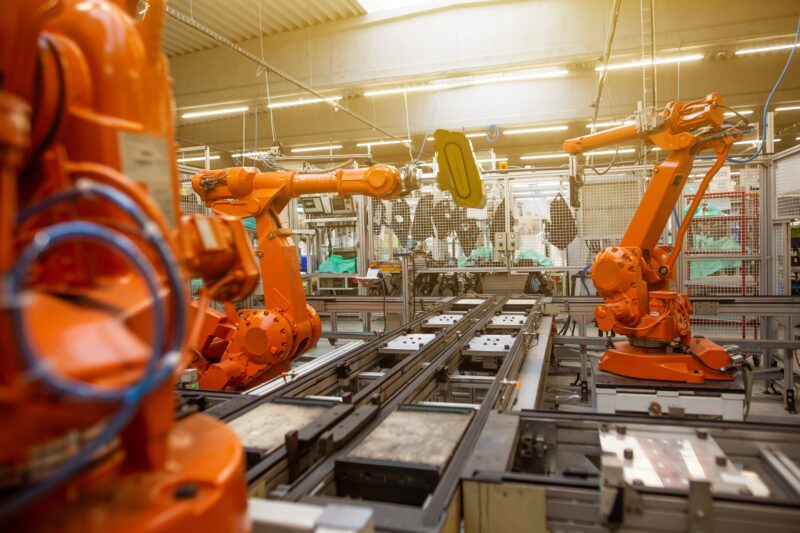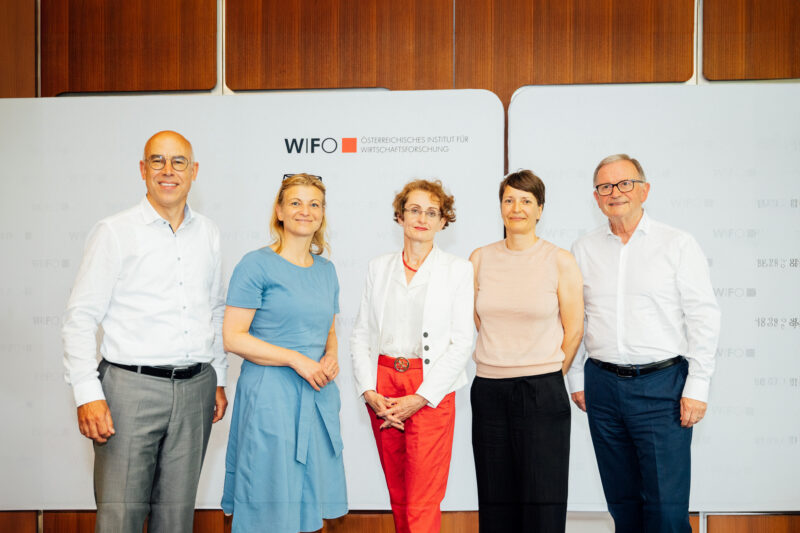
Structural Change in the Automotive Industry
Worldwide, legal framework conditions for the reduction of emissions, such as the EU emission standards, are driving the transformation of the automotive industry. Producers of vehicles with conventional engines that rely on fossil fuels are being put under pressure to innovate. The process of transformation can open up new growth opportunities for companies, but it also creates risks. Economic policy approaches should reduce the risk for the domestic automotive supply industry. Starting points are an improvement in planning certainty, consistency of the mix of economic policy measures, diversification of business activities, and training and further education.
The targeted reduction of CO2 emissions is a central driver of structural change in the automotive industry. This will accelerate the already intensive technological change. Decarbonisation is based on other factors, such as the digitalisation and automation of production processes or the electrification of vehicles. Industry 4.0 and electronically complex vehicles are changing products, production processes and demanded occupational profiles. Vehicles with traditional combustion engines are increasingly losing importance – both in production and in sales. Internationally operating automobile manufacturers have already committed themselves to decarbonisation. In addition, regulation, new mobility concepts and a change in customer preferences are shaping changes in demand. For example, the number of registrations of vehicles with lower CO2 emissions has increased steadily in Austria in recent years. The share of electric vehicles will continue to rise and play a role especially in local transport. Hydrogen vehicles have potential especially in the commercial vehicle sector.
This technologically driven restructuring of the automotive industry is resulting in radical changes in one of the most important sectors of the Austrian economy. The global transformation processes in the automotive industry have a massive impact on production, value creation and employment in the Austrian automotive supply industry. The Austrian automotive supply industry supplies internationally operating automotive manufacturers, whose technological decisions define the architecture of the production networks. The dependence on international production networks often limits the scope of action of Austrian producers. For example, the lack of microchips as critical system components has forced many automobile manufacturers to temporarily shut down their production, which in turn has a negative impact on the supplier industry. Since the production of the automotive supply industry in Austria is highly regionally concentrated, regions in which the automotive industry is of great importance face major challenges.
Although this structural change opens up new markets and business opportunities, it also entails risks and will lead to stranded investments. Changes in powertrains, materials, transport concepts, technologies as well as in demand behaviour will lead to transformations and changes in supply chains, which the automotive supply industry should prepare for at an early stage. To prevent undesirable consequences of structural change, economic policy approaches that provide planning certainty, focus on a consistent mix of measures, assist diversification of companies' fields of activity, and provide education and training are recommended. Innovative solutions that are found quickly and effectively increase the probability of survival of companies in the sector and could subsequently create a competitive advantage for Austrian companies in the automotive supply industry. Regulations and subsidies for such innovations can support companies. Companies that are successful in the long term use existing competences for adaptation and diversification strategies in order to reduce their dependence on the world market. The diversification of competence and product portfolios thus reduces the risks associated with decarbonisation. Education and training, also among decision-makers, are key to ensure the ability to adapt.

























